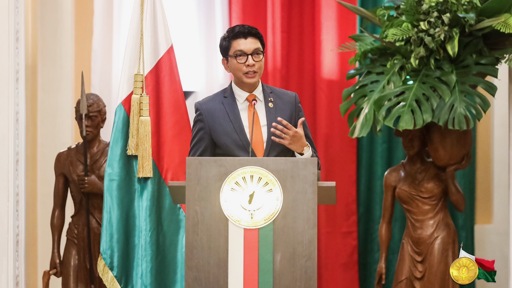The escalating the political crisis in Madagascar appears to have reached its peak on September 29, when President Andry Rajoelina announced that he was dissolving the government, following days of mass protests largely led by young people, against chronic water and power outages.
Protests sparked by service failures
The unrest began on September 25 in the capital, Antananarivo, as demonstrators took to the streets demanding reliable access to electricity and potable water, a fundamental challenge for many Malagasy households.
What began as largely peaceful marches soon degenerated as security forces intervened decisively. Tear gas was deployed, curfews imposed, and reports emerged of beatings, mass arrests, and even use of live ammunition.
By the time the unrest subsided, at least 22 people had died and over 100 were injured, according to UN human rights officials.
In many accounts, the scale of this protest wave is being described as the largest in Madagascar in years, and the gravest challenge yet to Rajoelina’s rule since his re-election in 2023.
President dissolves government
In a televised address on state broadcaster Televiziona Malagasy (TVM), President Rajoelina said that the government had failed in its duty, and offered an apology:
“We acknowledge and apologize if members of the government have not carried out the tasks assigned to them… I understand the anger, the sadness, and the difficulties caused by power cuts and water supply problems. I heard the call, I felt the suffering, I understood the impact on daily life.”
He further announced that Prime Minister Christian Ntsay and his cabinet would continue in a caretaker capacity until a new government could be formed, and opened a period for proposals for a new head of government.
UN Human Rights Chief calls out heavy police response
“I am shocked and saddened by the killings and injuries in the protests over water and power cuts in Madagascar. I urge the authorities to ensure respect for freedom of expression and peaceful assembly, consistent with their obligations under international human rights law.”
Political instability and public anger
The political climate has long been unstable; Rajoelina first came to power in a 2009 coup, stepped aside in 2014, and returned after winning elections in 2018. His 2023 re-election was criticized by opposition figures as not credible. He has not been able to steer the country to prosperity as Madagascar remains one of the poorest countries in the world.
Popular dissatisfaction had been brewing, especially in urban areas, over poor governance, corruption, and neglect of basic public services.
What comes next?
The dissolution is intended as a reset, and the president says he is seeking dialogue with young people for a solution. However, many insist on his own resignation. The question now is, will the dissolution cool the public’s anger, or will it be seen as a superficial move without structural reform?
The coming days will test whether the president can appoint credible new leadership capable of restoring public trust, or whether the move will be seen as a gesture that fails to address Madagascar’s structural crises, as happened in Kenya.
The post Madagascar’s president dissolves government following youth-led protests appeared first on Peoples Dispatch.
From Peoples Dispatch via this RSS feed


